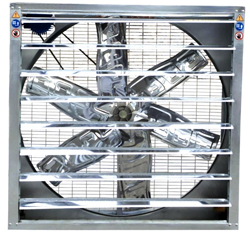
Categories
- Home
- Air Ventilation Fans
- Attic Ventilation Fans
- Barn Ventilation Fans
- Basement Ventilation Fans
- Bathroom Ceiling Ventilation Fans
- Bathroom Ventilation Fans
- Bathroom Ventilation Fans Installation
- Bathroom Ventilation Fans with Light
- Bathroom Wall Ventilation Fans
- Best Bathroom Ventilation Fans
- Best Ventilation Fans
- Ceiling Ventilation Fans
- Centrifugal Ventilation Fans
- Commercial Kitchen Ventilation Fans
- Commercial Ventilation Fans
- Confined Space Ventilation Fans
- Crawl Space Ventilation Fans
- Domestic Ventilation Fans
- Ductless Ventilation Fans
- Electric Ventilation Fans
- Exhaust Ventilation Fans
- Explosion Proof Ventilation Fans
- Fans for Ventilation
- Garage Ventilation Fans
- Greenhouse Ventilation Fans
- Home Ventilation Fans
- House Ventilation Fans
- Hunter Ventilation Fans
- In Line Ventilation Fans
- Industrial Roof Ventilation Fans
- Industrial Ventilation Fans
- Inline Ventilation Fans
- Jet Fans Basement Ventilation
- Kitchen Ventilation Fans
- Large Ventilation Fans
- Marine Ventilation Fans
- Mine Ventilation Fans
- Mining Ventilation Fans
- Panasonic Bathroom Ventilation Fans
- Panasonic Ventilation Fans
- Penn Ventilation Exhaust Fans
- Penn Ventilation Fans
- Portable Ventilation Fans
- Positive Pressure Ventilation Fans
- Quiet Ventilation Fans
- Roof Ventilation Fans
- Rooftop Ventilation Fans
- Room Ventilation Fans
- Shower Ventilation Fans
- Sidewall Ventilation Fans
- Small Ventilation Fans
- Solar Attic Ventilation Fans
- Solar Powered Attic Ventilation Fans
- Solar Roof Ventilation Fans
- Solar Ventilation Fans
- Sub Floor Ventilation Fans
- Tunnel Ventilation Fans
- Under House Ventilation Fans
- Underfloor Ventilation Fans
- Underground Ventilation Fans
- Ventilation Fans
- Ventilation Fans Bathroom
- Ventilation Fans FAQs
- Ventilation Fans for Grow Rooms
- Ventilation Fans for Kitchens
- Ventilation Fans Home
- Ventilation Fans Manufacturers
- Ventilation Fans Reviews
- Ventilation Fans Suppliers
- Wall Mounted Ventilation Fans
- Wall Ventilation Fans
- Whole House Ventilation Fans
- Window Ventilation Fans
- Woods Ventilation Fans
Barn Ventilation Fans
Barns are agricultural buildings that serve the dual purpose of a storage area as well as a sheltered workplace. As a storage space, barns may be used to house livestock or farming equipment and vehicles. Mostly found in rural areas on farms, these multi-purpose structures are of great use. Modern barns may be made of lumber, or may be steel buildings.
What are Barn Ventilation Fans?
Barns are huge structures with typically a few or no windows. Being enclosed spaces, stale air tends to get trapped inside. Moreover, if a barn is used to house livestock, the air inside could get very congested and smelly due to manure, hay, urine and grasses. The situation would be no different if farming vehicles were stored in the barn. In such a situation, it becomes extremely important to maintain a uniform, cool temperature within a barnTo combat the problem of poor air circulation within barns, some sort of system of mechanical ventilation must be installed. Barn ventilation fans are the most commonly used devices to improve the circulation of fresh air. Types of Barn Ventilation Systems
To maintain proper circulation of air, barn ventilation fans or tunnel ventilation may be used. Let’s take a look at these in detail.
- Barn Ventilation Fans: These fans are typically much larger than those used in home environments, but somewhat similar in their functioning. Large barn ventilation fans are strategically installed at different locations within the barn, to successfully eliminate stale air and bring in fresh air. The CFM required for the barn depends on what is being stored, how big it is and the natural weather conditions. For instance, in a horse barn, each horse would require 300 CFM in warm weather and around 25 CFM in winter.
Similarly, the required CFM needs to be calculated and the barn ventilation fans installed accordingly. It is recommended that at least two fans be installed with a variable speed feature, so the CFM can be adjusted according to need. Automatic fans that sense the temperature in the barn are also a good option. - Tunnel Ventilation: This is a different system of ventilation that does not require the use of barn ventilation fans. In this system, stale air is drawn mechanically, at high speeds, throughout the length of the building. The roof and walls of the barn are built solid, without any air inlets, in order to achieve the rapid movement of air.
There is a ton of information available on various websites online about barn ventilation systems and how they work. With the help of this information, you can understand better how barn ventilation fans work and what your exact requirements are.
Back to Top
